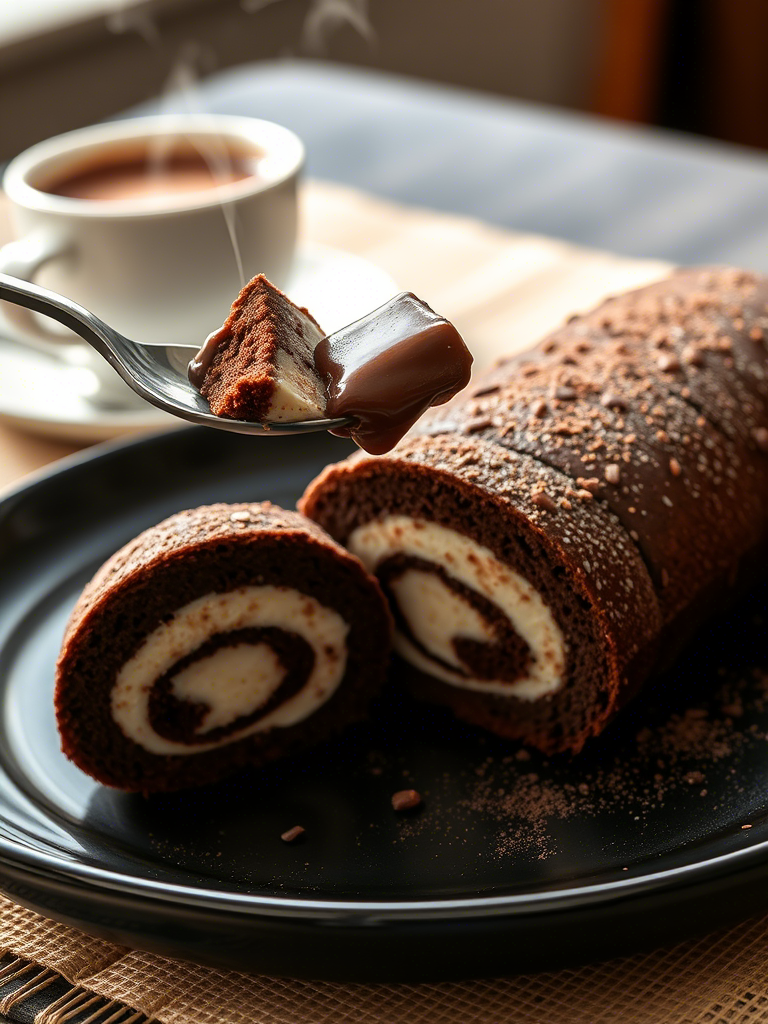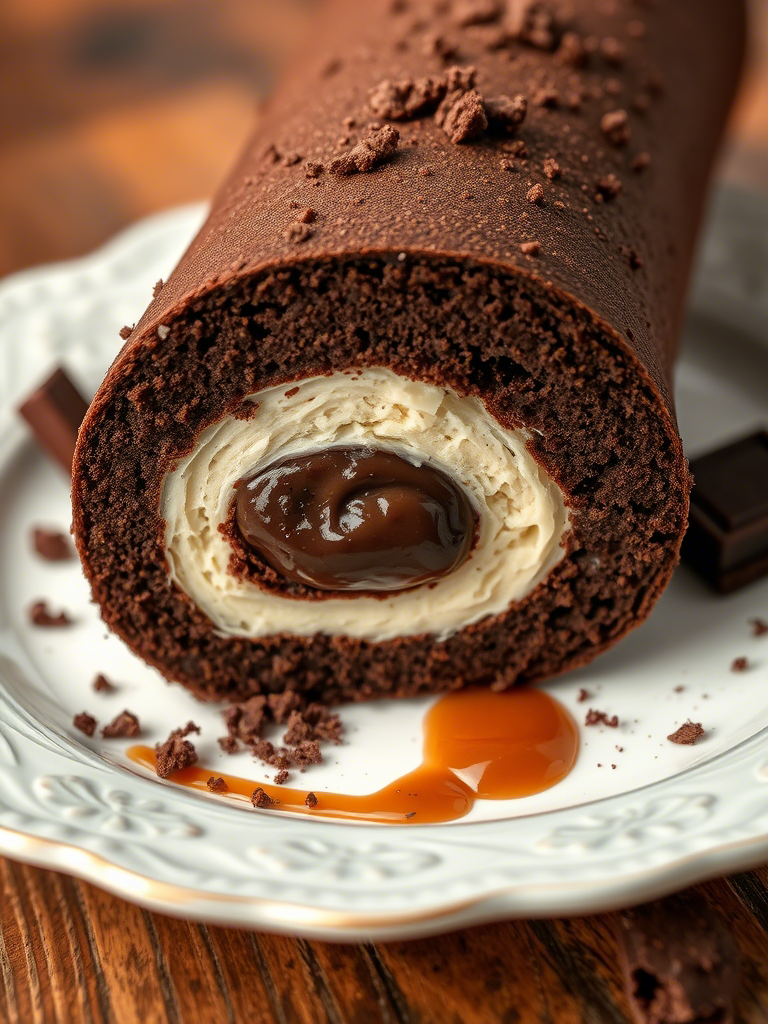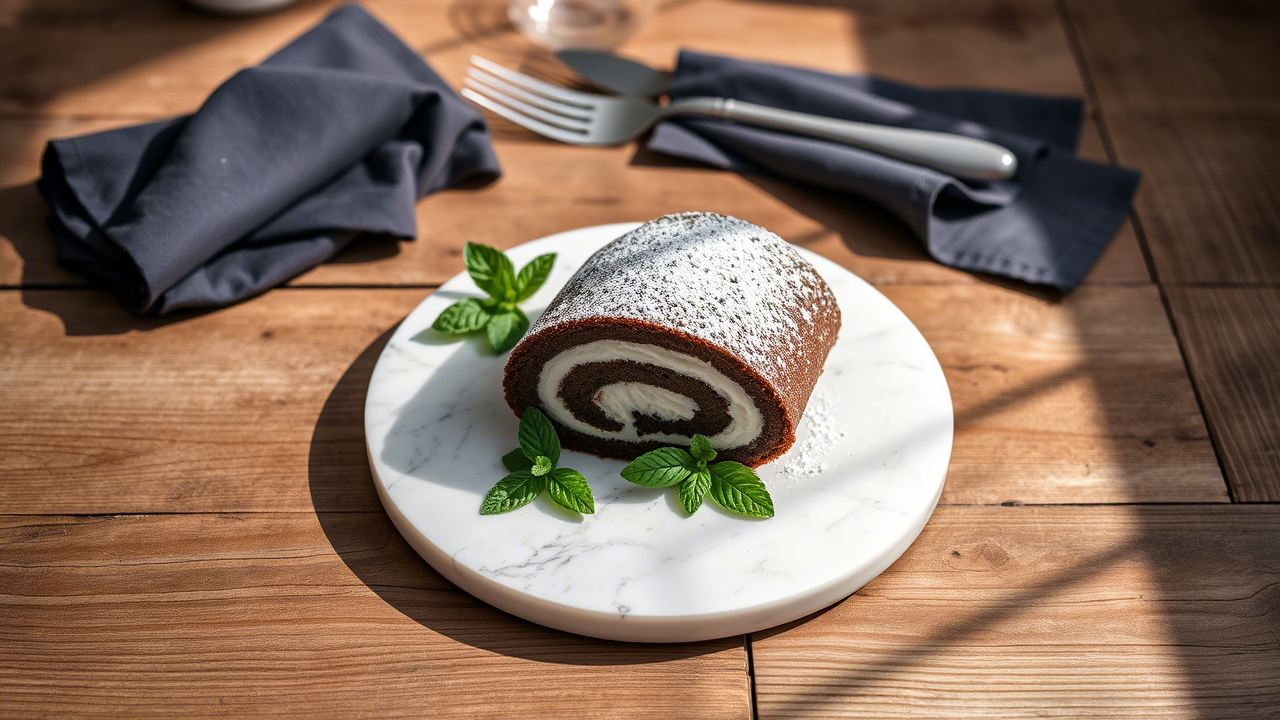There’s something wildly satisfying about slicing into a Choco Swiss Roll and watching that perfect swirl show up. It’s elegant, rich, playful—and believe me, it’s no walk in the park if you want to do it right. This isn’t your everyday sponge cake. This is a recipe that separates dabblers from seasoned home pâtissiers. If you’re a professional or a seriously dedicated hobbyist, you’re in the right kitchen.
This article will walk you through everything: the chemistry behind the sponge, how to avoid tragic cracks during the roll, and why temperature is your best friend and worst enemy. We’ll cover the technique, the timing, and the textures that make a Choco Swiss Roll not just good—but glorious.
What Is a Choco Swiss Roll, Really?
At its core, it’s a rolled sponge cake filled with cream and slathered in a glossy chocolate ganache or dusted in cocoa. But if you think that’s all there is to it, you’re missing the artistry.
The roll itself is a delicate genoise or chiffon base—both sponge cakes, but very different in structure. Chiffon is softer, thanks to oil. Genoise is airier but can dry out quickly. The filling? Traditionally whipped cream, but we’re gonna do better. And that chocolate coating? Don’t just melt and pour. Tempering and texture control are key if you want to go from home-baker-good to patisserie-level excellence.
The Science Behind the Sponge
If you mess up the sponge, game over. No roll, no delight.
Most Swiss rolls use a foamed egg sponge, where volume comes from whipped eggs rather than leavening agents. This means technique is everything. Room-temp eggs whip better because the proteins unfold more easily. Cold eggs? Forget it—like trying to inflate a balloon with a pinhole.
Professional tip: use cake flour. It’s got less gluten than all-purpose, making the sponge more tender and flexible—crucial for rolling. If your sponge cracks during the roll, odds are you either overbaked it or used the wrong flour.
Also, don’t deflate your batter. Fold in the flour gently, like you’re tucking a baby in at 2 a.m. You mess it up? The air escapes. No lift. Just… flat sadness.

Ingredients Matter (A Lot More Than You Think)
Use Dutch-process cocoa for a richer, smoother flavor. Natural cocoa is more acidic and will react differently, especially with your eggs and sugar.
Eggs? Large, fresh, and room temperature. No compromises here.
Sugar? Castor sugar works best—it dissolves faster, especially when whipping into eggs.
And that cream? High-fat, heavy whipping cream. Minimum 36% fat. Don’t even reach for the low-fat junk.
Let’s break this down properly.
Sponge Cake Base
- 5 large eggs, room temp
- 3/4 cup castor sugar
- 1/4 cup milk, lukewarm
- 1/2 cup cake flour, sifted
- 1/4 cup Dutch-process cocoa powder, sifted
- 1/4 tsp salt
- 2 tbsp vegetable oil
- 1 tsp vanilla extract
Whip the eggs and sugar over a bain-marie until pale, thick, and ribbon-y. You must get to the ribbon stage—where batter falls back like a ribbon and holds shape momentarily.
Fold in the dry sifted ingredients slow. Add oil and milk mixed together at the end, gently folding again. Line a jelly roll pan (10×15-inch works great), pour in the batter, spread evenly, tap out the air bubbles, and bake at 375°F (190°C) for 10–12 mins.
A minute too long, and it dries. That’s when the heartbreak cracks start happening.
Chocolate Filling (Not Just Whipped Cream, Folks)
- 1 cup heavy whipping cream
- 1/4 cup dark chocolate, melted and cooled
- 2 tbsp powdered sugar
- 1 tsp instant coffee powder (yes, trust me)
Whip the cream until soft peaks. Fold in the melted chocolate, sugar, and coffee powder. This combo adds depth, and the coffee subtly enhances the chocolate notes without being obvious. It’s a little cheat pros use a lot.
Chocolate Ganache Topping
- 1/2 cup heavy cream
- 1/2 cup dark chocolate chips or chunks
- 1 tbsp butter
- 1 tsp corn syrup (for shine)
Heat the cream until just simmering. Pour it over the chocolate and butter, let it sit for a minute, then stir. Add the syrup last. You get this glossy, pourable ganache that firms up just right—not hard like a shell, but not sticky either.

Rolling Without Cracking: The Technique
As soon as the sponge is out of the oven, dust a clean kitchen towel with cocoa powder (not powdered sugar—it gets wet and clumpy). Flip the cake onto the towel. Peel off parchment paper gently.
Roll the cake up with the towel while it’s still warm. Yes, warm. This sets the “muscle memory” of the cake and helps prevent cracks when re-rolling later.
Let it cool like that—rolled up—in the towel. It’s like training a yoga mat to bend a certain way.
Once cool, unroll, spread the filling evenly, and roll it back up. Not too tight or the filling oozes. Not too loose or it looks like a sad burrito.
Chill it for at least 2 hours before topping with ganache.
The Most Common Mistakes? Let’s Call Them Out
- Overbaking the sponge – It becomes stiff and breaks. Moisture is gold here.
- Not whipping eggs properly – No volume = flat sponge.
- Rolling when cold – You will get cracks.
- Under-whipping the cream – It’ll ooze, and you’ll hate yourself.
- Pouring hot ganache on a warm roll – It melts the filling. Rookie move.
Storage and Serving
You can make the whole thing ahead, up to 2 days in advance. Keep it in the fridge, wrapped. Serve it chilled or room temp—depends if you want a clean cut or a melty one.
Pro tip: wipe the knife between slices. It’s fussy but necessary. Ganache + cream = smudgy chaos unless you’re careful.
Variations for the Bold Baker
- Add chopped nuts to the filling for texture—hazelnuts are brilliant.
- Swap the cream for a mascarpone-chocolate mix.
- Infuse the sponge with orange zest for a chocolate-orange twist.
- Spike the filling with Baileys or Grand Marnier (grown-up version, right?).
- For the daring: make a marbled sponge. Pipe plain and chocolate batter side by side and swirl.
Why Professionals Love the Swiss Roll Challenge
Swiss rolls show technique. There’s no room to hide. It’s a cake that demands attention to temperature, timing, texture—all the big T’s. You can’t bluff your way through this one.
And it’s insanely versatile. You can dress it up with piped rosettes and gold leaf, or keep it humble with just a dusting of cocoa.
Some Michelin-level chefs have used this as a plated dessert component—sliced thin, torched edges, plated with coulis and ice cream. That’s how versatile this dessert is.
Fun Fact: The Roll Has History
The Swiss Roll isn’t actually from Switzerland. Most food historians trace it back to Central Europe, possibly Austria. The concept of rolling sponge with jam or cream spread fast in the 19th century.
It hit peak popularity in Britain and then the US. Now, you’ll find variations across Japan (where it’s an art form), to Latin America (where dulce de leche fillings rule).
Nutritional Snapshot (Just in Case You Care)
Per slice (1/10 of the roll):
- Calories: ~320
- Fat: 22g
- Sugar: 18g
- Protein: 5g
- Carbs: 28g
Yes, it’s indulgent. But we’re not here to count macros today.
Final Thoughts: Why You Should Try It Now
A good Choco Swiss Roll feels like velvet in your mouth. It’s tender, creamy, chocolaty—but light. That contrast between airy sponge and dense ganache? Magic. It’s a lesson in balance and patience.
If you’re serious about baking—or training someone else who is—this dessert teaches discipline. There’s no shortcut to that perfect swirl.
So, go ahead. Whisk like your reputation depends on it. Roll with your heart. And when someone bites into that slice and gasps a little? That’s the kind of applause no oven timer can measure.
Happy baking. And don’t forget—chocolate never forgets how you treated it.
FAQs
What makes a Swiss Roll crack when rolling?
Overbaking and rolling it cold are the main culprits—keep it moist and roll while warm.
Can I use all-purpose flour instead of cake flour?
You can, but it’ll be less tender and might crack more easily.
Why is Dutch-process cocoa recommended?
It gives a smoother, deeper chocolate flavor without the acidity of natural cocoa.
How long should I chill the Swiss Roll before serving?
At least 2 hours for clean slicing and stable filling.
Can I freeze the Choco Swiss Roll?
Yes, wrap it tightly and freeze for up to 2 weeks—thaw overnight in the fridge.
What’s the best way to avoid deflating the sponge batter?
Fold gently and slowly, especially after adding flour and liquids.
Can I make this recipe without the ganache topping?
Absolutely, dust with cocoa or powdered sugar instead.
What’s a good alcohol to add for flavor?
Baileys, Kahlúa, or Grand Marnier add lovely depth to the filling.
How long does it stay fresh in the fridge?
Up to 3 days, tightly wrapped to prevent drying out.
Why use instant coffee in the filling?
It enhances the chocolate flavor subtly, without making it taste like coffee.

Mariana is a passionate home cook who creates delicious, easy-to-follow recipes for busy people. From energizing breakfasts to satisfying dinners and indulgent desserts, her dishes are designed to fuel both your body and hustle.
When she’s not in the kitchen, she’s exploring new flavors and dreaming up her next recipe to share with the Foodie Hustle community.

